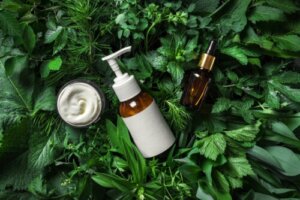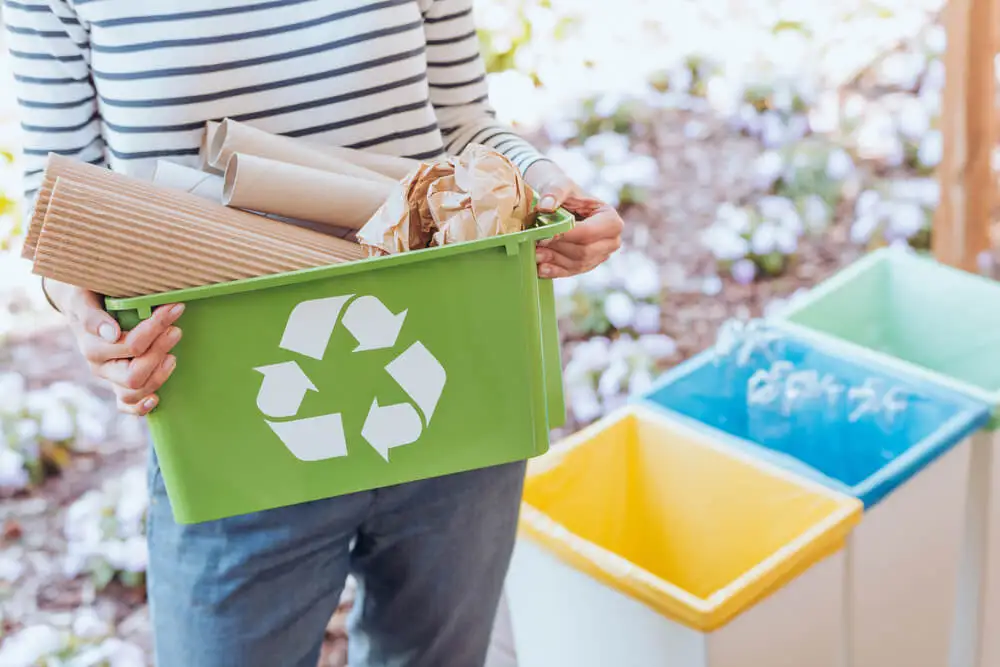What Are Upcycled Cosmetics?

The beauty industry is constantly searching for alternatives to curb the impact of its activities on the pollution of the planet. One such initiative is the concept of upcycled cosmetics.
The trend is oriented towards sustainability based on the creation of products using natural ingredients or by-products obtained in a responsible way as raw materials.
Thus, environmental awareness is making its way into the personal care area, with different brands joining the “creative recycling” trend and encouraging users to stick to these alternatives.
The goal of upcycled cosmetics
Upcycled cosmetics are just as effective as conventional cosmetics. The difference lies in the manufacturing method. This innovative mechanics consists of recovering waste and materials to give them a second life.
The main source of ingredients is the food industry. The purpose is to obtain the cosmetic active ingredients generated in such processes, which used to be wasted because they were considered useless.
With this technique, it’s possible to offer new substances, whose added value is that they help to protect the environment. The upcycled modality is well accepted, and it is well-known that food waste has innumerable ingredients that favor skin care.
Upcycled cosmetics include the following variety:
- Soaps
- Exfoliants
- Facial serums
- Moisturizing creams
- Body lotions
Brands such as Natana ®, Symrise ® and Keracol Limited ® take advantage of this form of creative recycling.

We think you may also enjoy reading this article: Five Ideas to Decorate Your Living Room with Recycled Materials
Useful ingredients in upcycled cosmetics
It’s common that those who haven’t yet tried upcycled cosmetics question the capacity of these products. However, the active ingredients they use respect the same quality standards as conventional brands.
Among the common ingredients used, rice starch stands out, which is ideal for the preparation of powders. The oil and proteins from salmon that aren’t sold also serve to revitalize skin cells. Some organic dyes are also prepared with black currant pulp.
Coffee grounds work as an exfoliant or blend in the manufacture of eye creams. They’re antioxidant and protective substances against ultraviolet (UV) rays. Other benefits are found in the derivatives and concentrates of different foods.
Olive oil
Polyphenols obtained from olive oil waste protect the skin from oxidative damage and promote collagen production.
Rambutan
The fruit of this tree is linked to collagen synthesis and wrinkle smoothing. It’s also attributed to the ability to strengthen the skin to retain water, hence its inclusion in upcycled.
Avocado by-products
Creams that help you fade dark circles and minimize the appearance of under-eye bags may contain avocado-derived polyphenols.
Vetiver roots
These strains are generally used in the creation of fragrances for perfumes. After this work, it is possible to recycle them and extract moisturizing and anti-aging active ingredients.
Wine making products
At the end of wine production, grape pulp, fruit skins, and seeds are left over. Everything is transformed into post-biotics that protect the dermis from oxidative stress.
Apricot seeds
Apricot kernels are profitable in the constitution of exfoliants and solid facial cleansers. The procedure consists of crushing them into granules and combining them with the rest of the components.
Orange and lemon juices and peels
The juice and peel of these fruits used to end up in the garbage. Now some people extract their antimicrobial properties to create natural preservatives. Also, these skins are potent sources of flavonoids and vitamin E.
Like this article? You may also like to read: How to Use Recycled Glass Bottles to Decorate your Garden
The positive impact of upcycled cosmetics on the beauty industry
The United Nations (UN) Environment Program aims to achieve a global ban on microbeads in personal care products and cosmetics by 2022. These small pieces of plastic present in exfoliants and toothpaste, for example, end up polluting the oceans and harming marine life.
The UN highlights that these microplastics often carry toxins, posing a risk to food safety and human health. Through upcycling, business, and social awareness spread, causing more and more people to rely on natural and ecological cosmetics.
In fact, an analysis by the consulting firm Grand View Research reveals that by 2030, the global market for organic personal care products should reach 42.19 billion dollars. The company points out that this type of cosmetics is gaining ground among a growing number of consumers attached to conservationist ethics.

Why opt for upcycled cosmetics?
The innovative way in which the beauty industry recovers some food waste to its advantage involves hard work to ensure the highest quality cosmetics. Manufacturers rely on specialized equipment and technology for the selection and safeguarding of fresh, germ-free raw materials, reducing the scope for adverse reactions.
And as the Banco Bilbao Vizcaya Argentaria newsletter explains, the main reason to turn to organic cosmetics is for health reasons. This kind of substance isn’t harmful to those who suffer from skin sensitivity.
.In any case, it’s always advisable to check with a dermatologist before trying any new product.
All cited sources were thoroughly reviewed by our team to ensure their quality, reliability, currency, and validity. The bibliography of this article was considered reliable and of academic or scientific accuracy.
- El futuro de la cosmética ecológica: una tendencia al alza. Banco Bilbao Vizcaya Argentaria. España; 2021. https://www.bbva.com/es/sostenibilidad/el-futuro-de-la-cosmetica-ecologica-una-tendencia-al-alza/
- La ONU lucha por mantener los océanos limpios de plásticos. ONU. 2017. https://news.un.org/es/story/2017/05/1378771
- Tamaño de mercado de cuidado personal orgánico con valor de $ 42.19 billones para 2030. Grand View Research. Estados Unidos; 2022. https://www.grandviewresearch.com/press-release/global-organic-personal-care-market
This text is provided for informational purposes only and does not replace consultation with a professional. If in doubt, consult your specialist.








